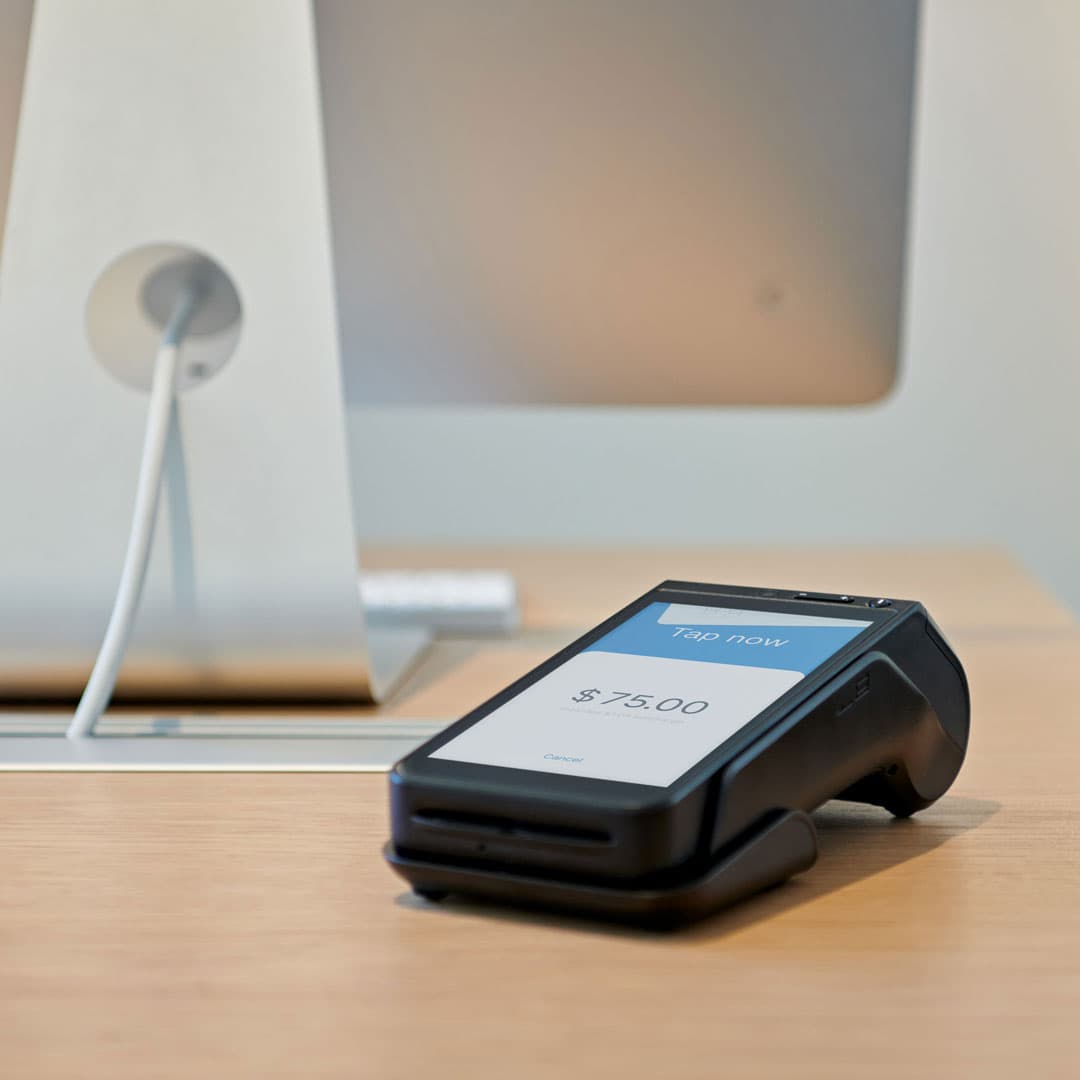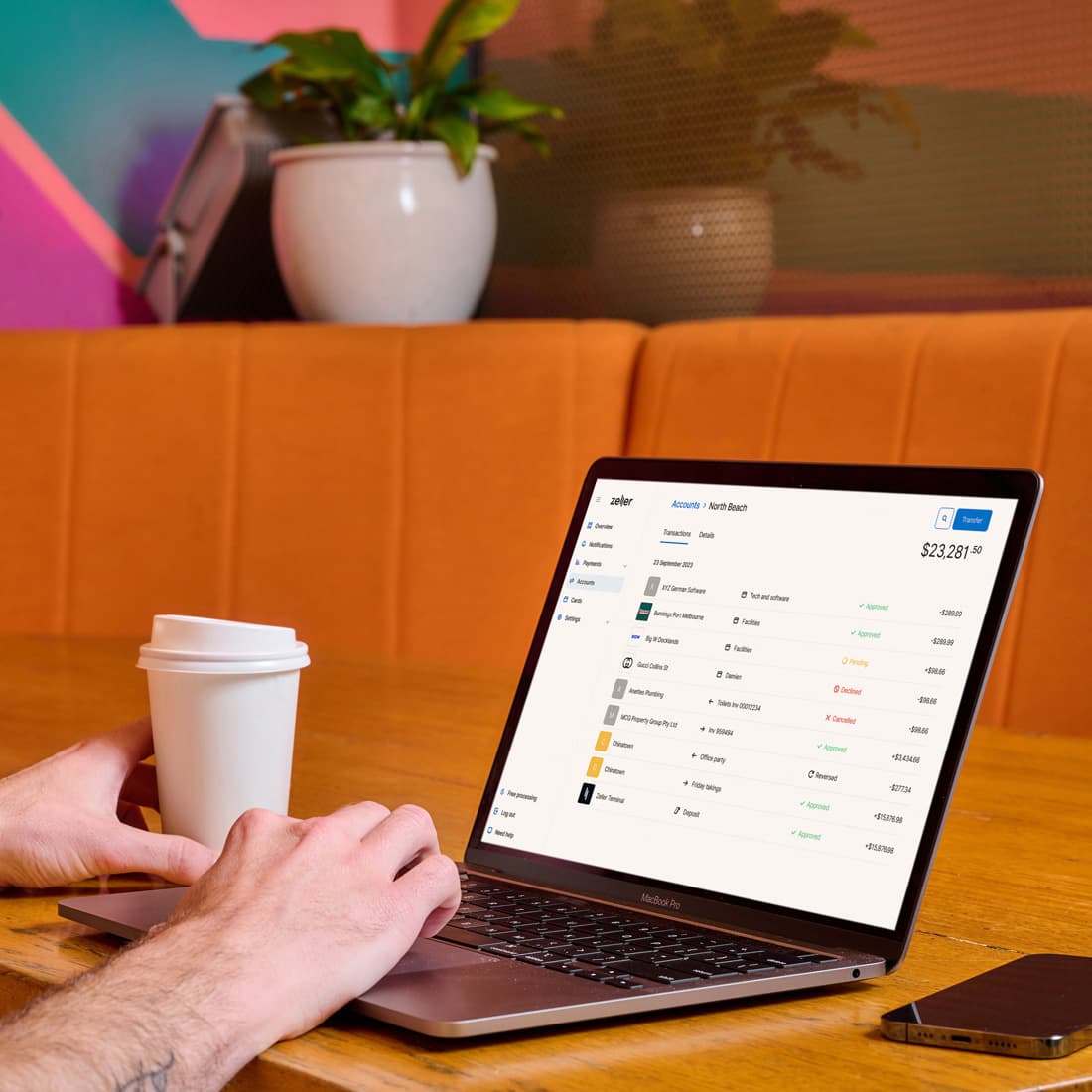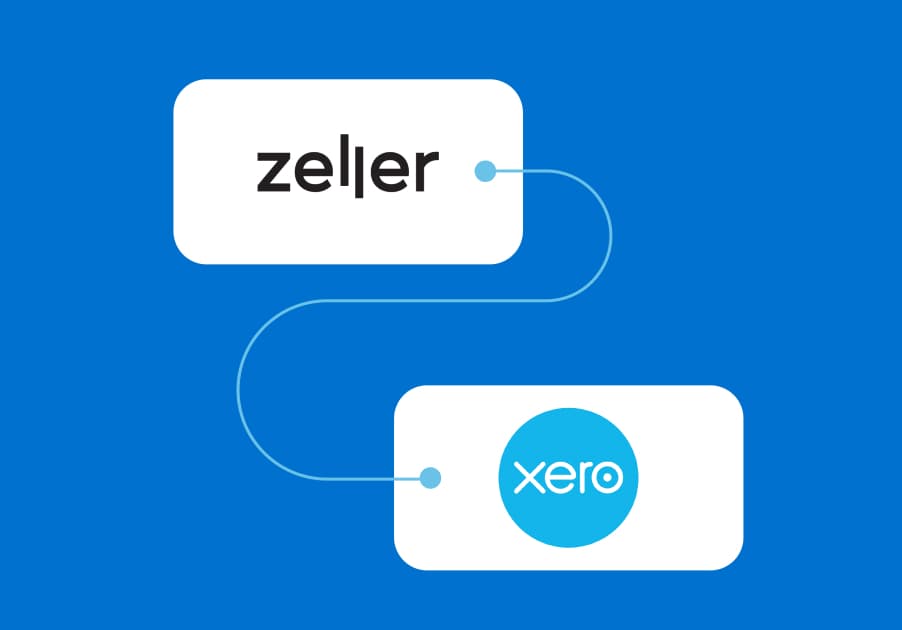


How To Open Your First Business Transaction Account
What is necessary to open a business account? To open a business transaction account , you’ll need to provide: certified copies of identification documents, such as a passport or driver’s licence details of your business proof your business exists, such as a website and social media profiles Additional documents may be required if your business operates under a particular structure. For example, if your business operates under a trust, documents identifying the beneficiaries of that trust may be required for account verification. Further, traditional banks often require you to visit a bank branch in person in order to set up a business account. Wondering how to set up a business account, or how to open a transaction account online? The easiest way is to sign up for Zeller. In just 5 minutes, most businesses can be up and running with a free Zeller Transaction Account . Once set up, you can create as many accounts as you like to separate business funds — and link each to a Zeller Debit Card for simple, trackable spending. Let’s dive deeper into the details, so that you can make an informed decision about the best account for your business. What is a business account? A business account is an account traditionally offered by incumbent banks. In recent years, digital banks and neobanks have introduced similar offerings. Business bank accounts offer a single place to accept deposits and make payments, while keeping your business and personal finances separate. A transaction account enables you to do the same. A business account itself is pretty straightforward. Different banks and alternative providers offer additional features and services, on top of the base offering, which usually come with extra costs. Fees including, but not limited to, monthly account fees and minimum deposit fees are important to keep in mind. Focus on finding an account that aligns with your specific needs in order to keep fees to a minimum. Why open a business account? There are a multitude of benefits that come with opening a separate account for business purposes. For one, setting up a business account can make bookkeeping less of a headache — especially at tax time. A business account also helps you stay in line with the relevant government rules and regulations. The Australian Taxation Office stipulates that ventures operating as a company, partnership or trust must have a business account for tax compliance. And, while sole traders don’t face the same requirement, a business account provides the same benefit of keeping personal and professional transactions separate. Once your business account is set up, you’ll have a clear path to sharing important information with your accountant or handling your tax obligations yourself. Business accounts also give you a clear view of your business finances. All of the relevant transactions are tracked in one place, making it straightforward to look at recent activity and identify any potential areas for concern. Opening a business account also helps your company appear more mature and professional. While customers won’t notice the difference at the point of sale, they will likely see it when reviewing their monthly statement. The legitimacy a business account offers can also encourage suppliers and vendors to form a relationship with you. When you hear the term “business bank account”, it’s usually in reference to a transaction account. This type of account is used to make and receive business payments on a daily basis. A business savings account is another type of business bank account, very similar to a personal savings account. These types of accounts serve as a place to deposit and hold money for longer periods of time. Who can open a business account? Banks and other providers of financial services have a number of rules and security measures in place to make sure anyone attempting to open a business account is doing so in good faith — and is eligible to receive one in the first place. The requirements for opening a business account are strictly defined but straightforward, at least as far as the highly regulated world of banking is concerned. You may be asked to provide a variety of documents and information to prove your business is legitimate and eligible for an account. This mostly involves things you likely have on hand right now or can quickly access, such as your company’s full name, Australian Business Number, and tax file number. The physical and registered address of a business are also commonly requested. You will also need to identify key parties, including both company directors and any employees who will access the account. You, your partners, and potentially your staff may need to produce passports or a certified copy of drivers licences. When should I open a business account? Opening a business bank account makes everything from tax time to accepting customer payments easier. As Australians increasingly move to using debit and credit cards for everyday purchases, this will only become more important. A business account is foundational for smoothly processing card and online payments and keeping track of your business’s finances. You should be looking to set up a business account as soon as you’ve set your business in motion. You’ll need to set aside some time to gather the needed documents and information, but accounts that offer online registration will save you precious hours (and, in some cases, days). You’ll also need to give some thought to the impact any fees will have on your budget. To save on fees, look for providers who are upfront about the costs of using their platform. How can I open a business account? Understanding how to open a business transaction account and set it up correctly is crucial. It streamlines day-to-day management of your finances and makes your business appear more professional. And, in many cases, a business account isn’t just a smart idea — it’s a requirement. You have plenty of choices when it comes to choosing a business account. There are traditional banks, of course, but their offerings don’t always align with the needs of modern business owners. High fees, excessive paperwork, and long application processes can sap your energy, turning what should be a basic task into a drawn-out process. These are just some of the reasons why Australian Businesses aren’t satisfied with the Big 4 banks — and why we built Zeller. We’re reimagining business banking for Australian merchants. With Zeller, you can sign up in minutes and begin taking payment. Discover how our fee-free Zeller Transaction Account , used in conjunction with Zeller Terminal and Zeller Debit Card , can help accelerate your cash flow and grow your business.

How to Read a Merchant Statement
Do you ever read your merchant statement and wonder what all of the different fees mean? Merchant statements can be confusing. Due to the sheer volume of information the typical statement contains, it’s easy to miss things like hidden charges. Every merchant service provider has a different way of setting out merchant statements, however there are a number of important elements that most statements will contain. Once you understand what these elements are, you’ll be able to identify exactly what you’re being charged and where you could save on costs. Keep reading to learn how to read your merchant statement so you can use it to identify opportunities to save on fees and grow your revenue. Your merchant statement provides a wealth of information, if you know how to translate it. What is a merchant statement? You’ll receive a merchant statement when you open a business account , which is an important step in managing the finances of your business. A merchant statement is a report of all of the transactions that your business completed throughout the month. This includes customer purchases as well as the associated payment processing costs. Reading this statement is essential to determine exactly how much money your business makes and spends. There’s much more to it than simply adding up the total amount of payments your business has accepted on any given day. Elements of a merchant statement Every payment provider produces its own style of merchant statement. Although some of the terminology used may change, the elements will be the same regardless of your provider. All merchant statements will set out a summary, a settlement report, and charges, at a minimum. Summary The summary is exactly what it sounds like — it’s an overview of everything you spent and earned that month. Depending on your merchant service provider, your summary may also include a comparison to previous months. Settlement report The settlement report is a day-by-day breakdown of the information in the summary, containing information about the transactions processed each day. Charges The charges section will typically separate the fees you pay into two different types: transaction charges and other charges. This is typically the most confusing part of any merchant statement. Transaction charges are an expense a business incurs each time an electronic payment is processed. In this section, you’ll see transaction fees for the debit and credit cards your business has taken payment from, as well as a service fee for each card type processed. Other charges encompass just about everything else. Some other fees that you may be charged are authorisation charges, installation or maintenance fees, and terminal rental fees. Rate of acceptance is the most important element of the charges outlined in a merchant statement, as well as one of the most commonly misunderstood. For that reason, it’s important to call out. Your business may get caught out, thinking the rate set out in your merchant statement is your true rate of acceptance. However, once you factor in other fees (such as terminal rental fees), it can be much higher. Now that you understand the three key elements of a merchant statement, follow the below steps to work out exactly what you’re spending and earning in any given month. Step 1: Identify the costs When you run a business, you owe fees for every card transaction you process. You can alleviate some of the burden of these fees by taking them into account when determining the price of your goods or services, or you can add a surcharge. Two types of fees that you will see on your merchant statement are wholesale fees and markup fees. Wholesale fees, also known as interchange fees, go directly to the financial institution through which the transactions are made, and they are determined and regulated by the credit card companies. They are fairly uniform across most banks, and non-negotiable. The fees often vary based on the type of card that is used, the size of the transaction and, sometimes, the type of merchant. Cards that accrue significant rewards for the users, for example, may incur higher fees for the merchant because these cards cost the financial institution more money — especially when used for more expensive purchases. That’s one reason why some merchants choose not to accept credit cards with rewards programs. Markup fees, on the other hand, are what you pay to your payment processor. This is how payment processors make money from business owners — otherwise, all of the fees you pay would go straight to the customers’ financial institutions. While banks are highly regulated and uniform in their processes, payment processors typically have more autonomy and flexibility. So, unlike wholesale fees, markup fees are typically negotiable — and they can differ greatly from processor to processor. This is great news for startup businesses owners, who can’t afford to get hit with significant fees. Even though a couple of cents may not sound like much in isolation, when you consider that it’s additional money you are paying to the bank on every single sale, it adds up. Step 2: Determine the pricing model Since markup fees are typically negotiable, it’s up to you to secure as good a deal as possible. Some payment processors will blur the lines between wholesale and markup fees. However, if you understand your processing rate plan — the agreement that sets out how much you will pay your payment provider each month — you will be able to work out exactly what your markup fees are and identify whether you’re really getting as good a deal as you think. The ways in which your fees are calculated and presented in your merchant statement depends on the pricing model, which is typically decided by your business account provider. Knowing which one you’re working with is the first step in understanding how you are charged. There are four main pricing models: interchange-plus, membership, flat-rate, and tiered. Interchange-plus Interchange-plus is the no-nonsense pricing model. It lays out all of your fees — wholesale and markup — and doesn’t leave anything out. For that reason, a merchant statement with an interchange-plus pricing model is typically the longest and most difficult to read. However, once you learn how to understand it, you’ll have all of the information about your transactions and fees available in one convenient place. Membership A membership pricing model is a way for merchants to pay a consistent monthly cost in exchange for lower fees per transaction. This is appealing for merchants who typically sell high-end products. This way, the payment processors still get their cut, but you aren’t hit with high fees for large transactions. Flat-rate A flat-rate pricing model charges the same fee for every transaction, regardless of size. It’s transparent and straightforward. The merchant statement provider combines markup prices and wholesale prices and presents one number. This makes for a shorter merchant statement and takes the headache out of separating prices to work out what you’re really paying — there’s nowhere to hide hidden fees. This straightforward approach also makes it easy to anticipate and account for next month’s processing costs. Plus, it’s typically the most affordable pricing model for business owners. Tiered In a tiered pricing model, the merchant statement provider groups transactions into several levels based on size or type of transaction. Each tier receives a different fee. Merchants don’t typically benefit from a tiered pricing model. It penalises you for larger transactions, which should otherwise be great for your business. The account provider gets the better end of the deal here because they have the opportunity to charge you more for your success. One positive that does come out of the tiered pricing model for the merchant, however, is that your processing rates become easier to understand — although that doesn’t change the fact that you are typically paying more than you need to. Also, similar to the flat-rate pricing model, merchant statements working with a tiered model do not show the breakdown of fees. The easiest way to identify whether you’re working with a tiered pricing model is to look for the terms qualified, mid-qualified, or non-qualified (sometimes written in as qual, mqual and nqual). Put your knowledge to the test Now that you know the main elements of a merchant statement, it should seem a lot less chaotic. You can use this information to make future pricing decisions about your business so it can grow as much as possible. Or, you can use your knowledge to determine whether or not you are getting the best deal possible. If not, you may need to consider switching account providers. Need some help? Even when you know where to look, what you're looking for is not always clear. Merchant statements can be ambiguous and complex, and are often fraught with hidden charges that catch merchants out. Zeller Sales can help you translate the bank-speak to discover what you're currently paying, and then build a straightforward, custom package. Contact the team to find out what your business could be saving. Simplified merchant fees Keep fees as low as possible with one flat transaction fee, no hidden charges, and no lock-in contracts. Discover Zeller

Zeller and Xero: Teaming Up for Bank Feeds
Streamline reconciliation with Zeller's Xero Bank Feeds. No business owner looks forward to manually reconciling their accounts. We’ve partnered with Xero to reduce the admin load of manual transaction uploads and reconciliations so you can focus on more important tasks. Xero’s online accounting software provides visibility of your business accounts in a simple, smart and secure way. With Xero Bank Feeds, transactions processed through your chosen Zeller Transaction Account are automatically uploaded to your Xero organisation. With Zeller, there’s no need to wait until close of business — an up-to-the-minute feed of your incomings and outgoings will appear in Xero. This powerful integration helps you to: simplify your business accounting with an automatic, integrated feed of Zeller transactions to Xero. save time and run your business more efficiently by eliminating the need to manually import your transactions every day. securely share accounting information to third parties, without the security risk of sharing your credentials. understand your cash flow with up-to-the-minute transaction uploads, enabling you to simplify your tax returns, more easily control cash flow and make smarter business decisions. Connect your Zeller Transaction Account to Xero in just a few clicks today. What is a bank feed? A bank feed automatically sends information about transactions to your accounting software. Together, Zeller works with Xero to automatically import transactions from your Zeller account directly into your Xero organisation. Xero direct bank feeds ensure transactions are accurately reflected across your most-used financial and reporting tools, giving you an up-to-the-minute view of your cash flow at any point in time. When you use bank feeds, both incoming and outgoing transactions flow seamlessly into Xero — reducing manual admin as well as the risk of data entry errors. You can even grant secure access to third parties, like your accountant or bookkeeper, to help you forecast and plan from the exact same data. Why set up a bank feed with Xero? A streamlined payment and reconciliation system allows business owners to see their true financial position at any point in time. Zeller’s automatic bank feeds help you stay in control of your finances while saving time on manual data entry, by enabling you to keep track of your incomings. All of this arms you with insight you can use to grow your business and makes tax time easier. By giving you the ability to grant secure access to third parties, such as your accountant or bookkeeper, it also streamlines your accounting and reporting tasks. Setting up Zeller and Xero bank feeds Using Zeller’s integrated bank feeds is an easy way to take control of your cash flow, and improve your business. Plus, it’s free to set up. Before setting up a Xero direct bank feed, you'll need: a Zeller Account to be accepting transactions into your Zeller Transaction Account and/or spending using your Zeller Mastercard to be logged in to Zeller Dashboard to be registered as a customer with Xero Connect your bank feeds Many small business owners already use business accounting software, like Xero. To set up bank feeds: log in to Zeller Dashboard navigate to the new Xero Bank Feeds Integration connection by clicking to expand Settings, then clicking Connections Read and accept the disclaimer Click Connect Follow the prompts to authenticate the connection with Xero, then connect your bank feeds by following these steps: Select which Xero organisation you want to integrate with Zeller, and click Next. Select which Zeller Transaction Account to share with Xero, and click Save. You’ve now set up bank feeds in Xero. Update your bank feeds Once your direct feed is connected, statement lines will automatically appear in your Xero organisation — ready for you to reconcile. You will never need to manually upload or update your transactions again. Transactions from your Zeller Transaction Account are immediately and seamlessly uploaded to your Xero organisation. With Zeller, there’s no need to wait until close of business. Speed up your reconciliation with bank feeds today This powerful Zeller and Xero integration is built to save time, reduce human error, and give you an up-to-the-minute view of business finances. Bank feeds bring all of your financial information together in one spot so you can make important business decisions. As a financial services provider , Zeller is committed to streamlining daily tasks for business owners — giving them back time to focus on growing their business. Stay tuned for more exciting updates to your Zeller account, coming soon.
